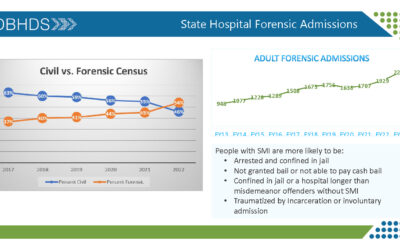Heroine and opioid addiction have received a great deal of attention over the past five years in Virginia and across the nation. An “opioid crisis” has been declared in addition to a “national public health emergency” (see this link on SAMHSA’s site as well).
In Virginia and across the nation there are opioid summits and conferences for health professionals, advocates and to discuss ways to reach the general population.
A 2017 Public Policy Poll found that 61% of respondents and 72% of respondents believe people should receive treatment for heroin use and prescription drug abuse, respectively. This poll conducted by Center for Public Policy at the L. Douglas Wilder School of Government and Public Affairs at Virginia Commonwealth University finds treatment is preferred rather than heroin users and prescription drug abusers being arrested and placed in the legal and criminal justice system.
Treatment and harm reduction efforts were furthered when Virginia received $9.7 million to fund medical treatment for opioid addiction and overdose. We also need different approaches to harm reduction and to address demographic and cultural variance in opioid access and opioid addiction.
Demographic categories and cultural identities are connected with learning, mental and physical development, belief systems, and social interactions. This correlates with mental health and physical health through a number of factors including: family history, genetics, and tendencies towards health conditions, perceptions regarding the importance of health and the relevance of health services, and whether there are accessible and affordable health services.
Examples of programs to reach across demographics and cultures:
- Schools in Virginia Beach, Virginia fight the opioid crisis by using a drug curriculum to teach children about substance use and substance abuse. This highlights the importance of teaching children about substances instead of using “scare tactics” that do not emphasize children learning facts about substances. In 2014 Schrager and colleagues conducted a study about the importance of teaching children and youth about the facts and risks of substances.
- The Henry J. Kaiser Family Foundation, 2015, “Opioid Overdose Deaths by Gender” (number, percent, rate): Gender variance in opioid addiction and gender-based recommendations for prevention programs.
- It is important to reach racially and ethnically diverse communities. The Henry J. Kaiser Family Foundation, 2015, “Opioid Overdose Deaths by Race/Ethnicity” (number, percent, rate). When reaching racially and ethnically diverse communities, we must discuss how opioid addiction is being presented very different than crack cocaine addiction and other addictions that predominantly or disproportionately harm blacks/African-Americans and non-white Hispanics. This highlights a racial and ethnic divide.
- Socioeconomic status is strongly correlated with race and ethnicity. For instance, blacks/African-Americans are disproportionately of lower socioeconomic status. Opioid programs and initiatives must reach the people with less access to health services. Research has found correlates of socioeconomic status and race and ethnicity on patients being prescribed pain killers such as opioids ( Hollingshead and colleagues ; T. Anastas and colleagues ). Becker and colleagues found black/African-American patients can be more monitored than white patients which can increase white patient access to opioid addiction. This is connected to black/African-American patients being more represented in lower socioeconomic status and also having history of drug addiction than white patients.
Capturing demographics and cultures is necessary for the diversity of opioid access, opioid use, and opioid addiction. We cannot declare opioid a “crisis” without understanding this diversity and incorporating this diversity in health organizations, health programs, and community outreach.
Opinions in Guest Postings are those of the author and do not necessarily represent MHAV.
By Kimya N. Dennis
 Kimya N. Dennis, Ph.D. is a consultant, speaker, community advocate, educator and researcher from Richmond, VA, living in Winston-Salem, NC. Dr. Dennis’s work addresses demographic and cultural variance in mental health, suicide and suicidal self-harm, criminality, reproductive freedoms, and sociocultural inequities. Contact: www.kimyandennis.com and kimya@kimyandennis.com.
Kimya N. Dennis, Ph.D. is a consultant, speaker, community advocate, educator and researcher from Richmond, VA, living in Winston-Salem, NC. Dr. Dennis’s work addresses demographic and cultural variance in mental health, suicide and suicidal self-harm, criminality, reproductive freedoms, and sociocultural inequities. Contact: www.kimyandennis.com and kimya@kimyandennis.com.



